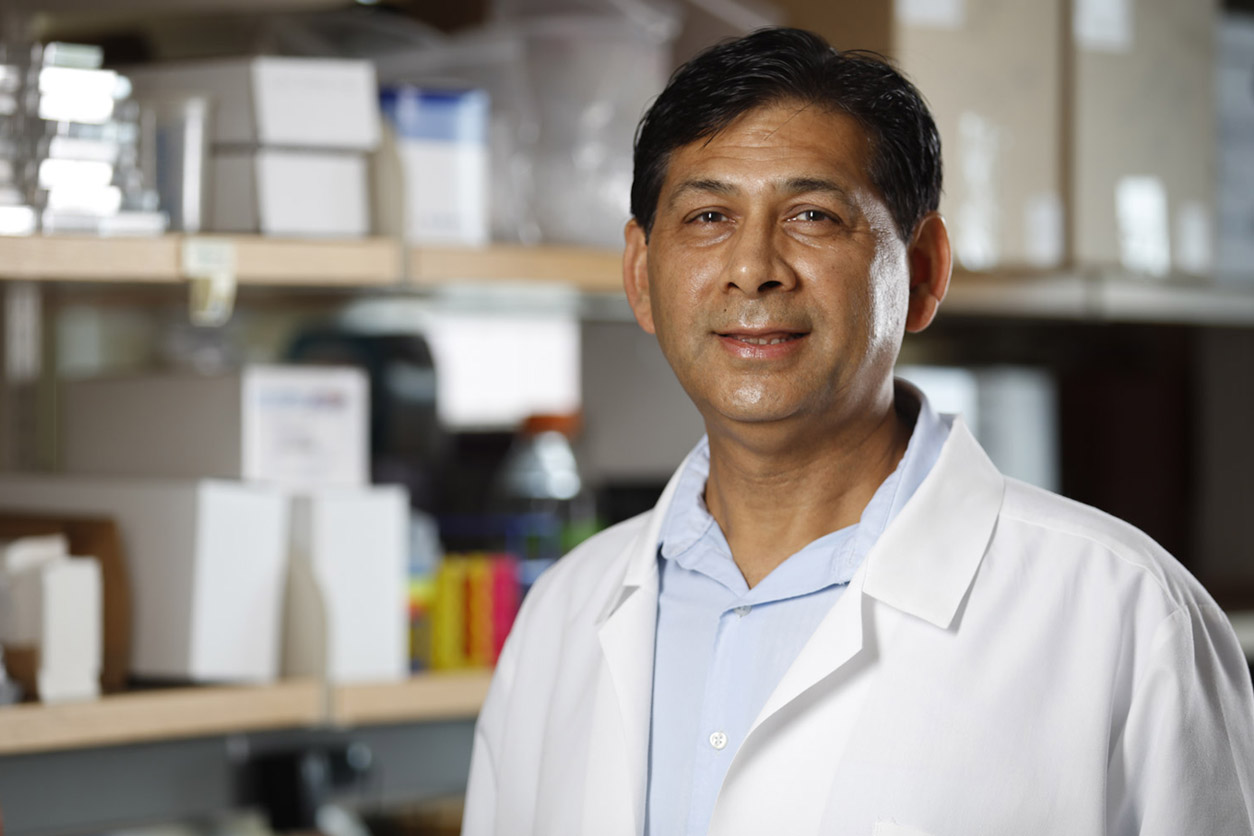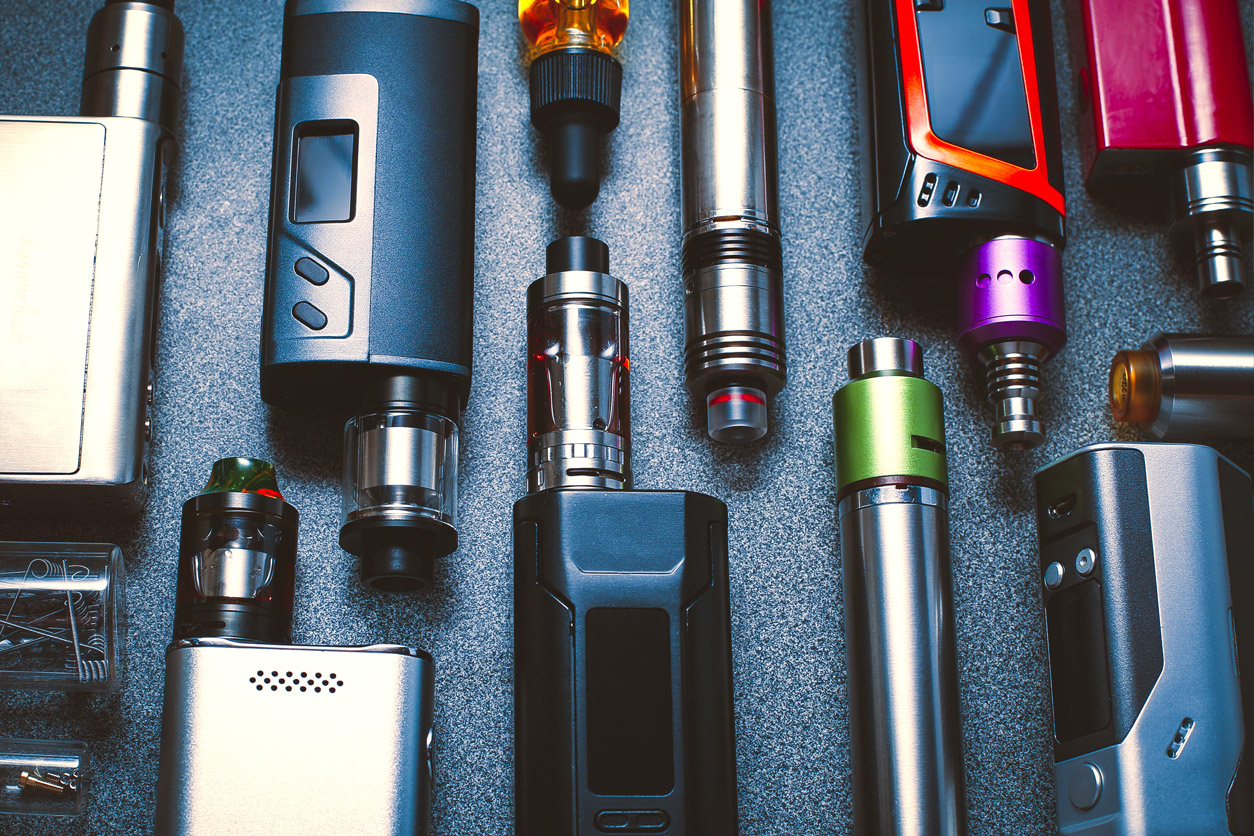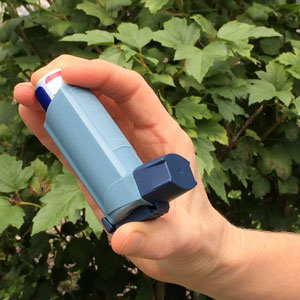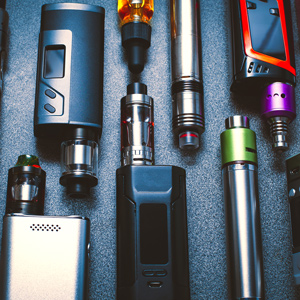
At the 2023 meeting of the Society of Toxicology (SOT), held last month in Nashville, Tennessee, I listened to a variety of exciting talks by NIEHS scientists and grant recipients. Topics ranged from how artificial intelligence and machine learning can advance research into the health effects of chemicals to how environmental factors can influence neurological diseases.
I was thrilled to see many institute-funded scientists recognized for their outstanding toxicological research, including Irfan Rahman, Ph.D., who took home the 2023 SOT Leading Edge in Basic Science Award. He was recognized for his groundbreaking work examining the biological mechanisms involved in e-cigarette and tobacco toxicity.
Rahman is a professor at the University of Rochester Medical Center, where he directs the Center for Inhalation and Flavoring Toxicological Research, among his many other duties. Since the 1980s, he has conducted pioneering research into the negative biological changes caused by cigarettes, secondhand smoke, and, more recently, e-cigarettes.
Last month, I sat down with Dr. Rahman to learn more about his research program, what inspired him to pursue a scientific career, and why he thinks vaping and e-cigarettes represent a major public health threat. I was deeply impressed by not only Dr. Rahman’s deep scientific knowledge in this area but also his passion for protecting human health.
Rick Woychik: You have worked to advance inhalation toxicology since the late 1980s. What inspired you to conduct such research?
Irfan Rahman: I was born in the city of Bhopal, India, and in my late teens, there was a major disaster at a pesticide plant there that caused hundreds of thousands of residents to be exposed to methyl isocyanate, which is a dangerous gas. The event had a profound effect on my personal life and prompted me to understand how inhaled toxicants can affect human health.

A significant amount of the gas ended up being emitted through our railway station, and our family lived about 3-5 miles away from that area. When the gas leaked in the early morning hours, people started panicking — thousands of people died immediately, and a lot of animals were dying, too. The gas caused asphyxia, making it hard for people to inhale oxygen.
Other motivators for me to pursue a career in inhalation toxicology were air pollution — I lived in a small village, and pollution levels were very high growing up — and the fact that there was a lot of cigarette smoke on planes that I experienced when flying in the 1980s. I remember planes being filled with smoke, and even if you requested a nonsmoking section, the secondhand environmental smoke still made its way to you.
More recently, I’ve been inspired to study vaping and e-cigarettes. I remember when the first e-cigarette devices made their way to stores in the early to mid-2000s. I knew at the time that, contrary to what many people assumed, these were not harmless devices that only caused inhalation of water vapor. There were dangerous chemicals in them, and I wanted to find out how they affect health.
RW: Thank you for sharing that story. The Bhopal Disaster is considered the worst industrial accident in history, but your experience is inspiring because out of that tragedy, you found your scientific calling.
You mentioned your early interest in studying the health effects of e-cigarettes. Your outstanding work in that area is a major reason you won the 2023 SOT Leading Edge in Basic Science Award. Can you expand on your research into vaping and e-cigarette flavoring?
IR: Vaping delivers nicotine to the lungs in ways that are seemingly safe but actually quite dangerous to lung health. During vaping, e-cigarette vapors, which include toxic chemicals, are inhaled into the lungs. Beyond nicotine, vaping can deliver substances such as vegetable glycerin, propylene glycol, volatile organic chemicals, anti-freezing agents, metals, and many other compounds. There are also many flavorants [flavoring chemicals] used in various e-cigarettes. All of these substances get into users’ air sacs, where oxygen transfer occurs. The chemicals replace oxygen, and they can cause irritability in the lung as well as breathing difficulties.

Among our other projects, my team has sought to understand how flavoring agents and other e-cigarette substances can affect circadian biology. When scientists began to investigate the molecular circuitry that dictates our circadian clocks, they originally worked out the details in certain sections of the brain. However, more recently, it was discovered that these same circuits and molecules play a role in establishing a circadian rhythm in the metabolism of cells in other parts of the body, including the lung. So, we want to study how flavoring agents may disrupt circadian biology and pave the way for lung injury, lung fibrosis, or susceptibility to respiratory disease.
RW: Speaking of susceptibility to respiratory disease, I understand that you conducted important research during the COVID-19 pandemic. Can you expand on that?
IR: In 2019, the first cases of E-Cigarette or Vaping Use-Associated Lung Injury, also called EVALI, began to crop up in the U.S. EVALI is a severe and potentially lethal lung disease, and some of the same disease mechanisms are involved in COVID-19. When we went into the pandemic, we determined that exposure to nicotine through e-cigarettes and vaping can actually increase the concentration of the ACE2 receptor for the SARS-CoV-2 virus, thereby making people more susceptible to the disease.
Also, vaping can interfere with mitochondria, which play an important role in healthy lung function. Mitochondria are the building blocks of cellular energy, and vaping chemicals can reduce that energy, causing lung cells to have less power to do their jobs. Eventually, such mitochondrial disruption produces inflammatory responses that can increase lung aging, so that a 45-year-old who vapes might actually have the lung function of a 60-year-old, for example. And that kind of accelerated lung aging, or lung cellular senescence, can also make individuals more vulnerable to diseases like COVID-19.
RW: Any final thoughts for Environmental Factor readers?
IR: Vaping is a major public health problem, in my view. It is a form of self-inflicted damage, in part because many are not aware of its health effects, or perhaps because they’ve been told it is harmless. Many young people in our country are getting addicted to e-cigarettes, and companies are producing a variety of vaping products with shiny packaging and nice-sounding flavors that make them even more enticing. But work by my team and others has provided important insights into vaping, and I try to spread the word about its negative effects whenever possible.
I am proud that through NIEHS funding, my team has been able to characterize some of the major effects of vaping, and I look forward to continuing this important research in the future. There are many unanswered questions about all of the negative biological consequences of e-cigarettes, and through further research, we will be able to answer them.
(Rick Woychik, Ph.D., directs NIEHS and the National Toxicology Program.)









